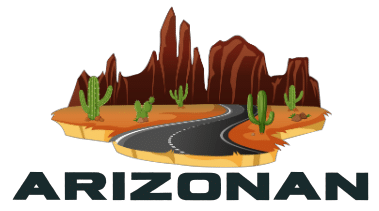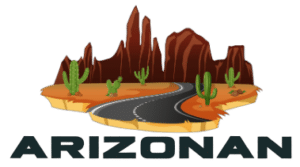Surprise, Arizona
Introduction
Surprise, Arizona, is a charming city located about 20 miles northwest of Phoenix in Maricopa County. Known for its friendly atmosphere, safe neighborhoods, and high-quality public services, Surprise is a fantastic place to live, work, and play. The city has a population of approximately 140,000 residents and continues to grow. More information about Surprise can be found on the City of Surprise official website.
Thank you for reading this post, don't forget to subscribe!
Surprise was founded in 1938 and has grown from a small farming community to a vibrant city. The city’s history is preserved in several historic districts, historical sites, and museums. Notable figures from Surprise includeFlora Mae Statler, the founder of the city, and Royer “Bud” Jenkins, the first mayor. More about the city’s history can be found on the Surprise Historical Society website.
Surprise is located approximately 20 miles northwest of Phoenix. The drive between the two cities takes about 30 minutes via US Route 60.
Surprise has a growing economy, with major sectors including healthcare, education, retail, and manufacturing. Large employers in the city include the Dysart Unified School District, Walmart, and Banner Health.
Surprise is served by the Dysart Unified School District, which includes several highly rated elementary, middle, and high schools. The city also offers a variety of adult and continuing education opportunities, including classes and workshops at the Northwest Regional Library and the Surprise Learning Center. The city has several private schools, and there are many options for preschool and childcare.
Surprise has several medical facilities and clinics, including the Banner Del E. Webb Medical Center, the Abrazo Surprise Hospital, and several urgent care clinics.
Surprise offers a variety of housing options, from single-family homes to apartments and condos. The city has several planned communities, such as Marley Park and Prasada. Surprise is also a popular retirement destination, with several active adult communities, including Sun City Grand and Arizona Traditions. More information can be found on the City of Surprise Housing website.
Environment and Sustainability
Surprise places a great value on environmental sustainability. The city is part of the Arizona Sustainability Alliance and is committed to energy efficiency, water conservation, and recycling programs. More details on these initiatives can be found on the Surprise Environmental Division web page.
Town Awards and Recognition
Surprise has been recognized for its commitment to the community. It was named a “Tree City USA” by the Arbor Day Foundation and has received awards for its water conservation efforts.
Climate
Surprise has a desert climate with hot summers and mild winters. The city enjoys more than 300 days of sunshine each year, making it a great place for outdoor activities.
Quality of Life
The quality of life in Surprise is high. Residents enjoy access to beautiful parks, a variety of recreational activities, high-quality schools, and excellent healthcare facilities. The city also has a low crime rate.
Accommodations
Surprise offers a range of accommodations for visitors, including hotels, motels, and vacation rentals. More information about accommodations can be found on the Surprise Tourism website.
Resorts
While Surprise itself does not have many resorts, there are several luxurious resorts located nearby in the greater Phoenix area. These include the Wigwam Resort, the Pointe Hilton Tapatio Cliffs Resort, and the Arizona Biltmore.
Camping and RV Resorts
There are several camping and RV resorts located near Surprise. These include the Sunflower RV Resort, the Happy Trails RV Resort, and the Desert Shadows RV Resort.
Attractions
Surprise has many attractions, including the Surprise Aquatic Center, the Surprise Tennis and Racquet Complex, and the White Tank Mountain Regional Park. The city is also home to the spring training facilities for the Kansas City Royals and the Texas Rangers.
Points of Interest
Points of interest in Surprise include the Marley Park, the Surprise Stadium, and the Wildlife World Zoo, Aquarium & Safari Park.
Things to Do
There are many things to do in Surprise, from hiking and biking in the White Tank Mountain Regional Park to shopping at the Surprise Towne Center. The city also hosts a variety of events throughout the year, including concerts, sports tournaments, and community festivals.
Cultural Centers
Surprise is home to several cultural centers, including the West Valley Art Museum and the Heard Museum West. The city also has a vibrant arts community, with many galleries and art events throughout the year.
Dining and Nightlife
Surprise offers a wide range of dining options, from fast-food chains to local restaurants serving international cuisine. The city also has a growing nightlife scene, with several bars and clubs.
Off-road trips, Horseback riding, Hiking, Scenic Drives, Art and Culture, Events and Festivals, Clubs and Organizations, Dog Parks Golf Courses, Outdoor Activities and Sports, Parks and Playgrounds
Surprise offers a wide range of outdoor activities and sports, including off-road trips, horseback riding, and hiking. The city is surrounded by beautiful desert scenery, making it a great place for scenic drives. Surprise is home to several art festivals and cultural events throughout the year, and there are many clubs and organizations for residents to join. The city has several dog parks and golf courses, and there are many parks and playgrounds for families to enjoy.
Transportation
Surprise is served by several major highways, including US Route 60 and State Route 303. The city also has a public transportation system, which includes buses and a ride-sharing service. More information can be found on the City of Surprise Transit website.
Location from Tucson, Arizona
Surprise is approximately 150 miles north of Tucson. The drive between the two cities takes about 2.5 hours via Interstate 10.
Shopping and Retail
Surprise has a variety of shopping options, from major retail chains to local boutiques. The city’s main shopping centers are the Surprise Towne Center and the Prasada Shopping Center.
Sports and Recreation
Surprise is home to the Surprise Stadium, the spring training facility for the Kansas City Royals and the Texas Rangers. The city also has several parks, golf courses, and the Surprise Aquatic Center.
Police Department
The Surprise Police Department provides law enforcement services for the city. More information can be found on the Surprise Police Department website.
Government Structure and Services
Surprise operates under a council-manager form of government, with a mayor and six city council members. The city manager oversees the daily operations of the city. More information can be found on the City of Surprise Government website.
Fire Department
The Surprise Fire-Medical Department provides fire protection and emergency medical services for the city. More information can be found on the Surprise Fire-Medical Department website.
County Government
Surprise is located in Maricopa County, which provides various services such as public health, environmental services, and elections. More information can be found on the Maricopa County website.
Summary
Surprise, Arizona, is a rapidly growing city with a small-town feel. It offers a high quality of life with excellent schools, a variety of recreational opportunities, and a safe and friendly community. The city has a diverse economy and is home to several large employers. The rich history of Surprise is preserved in its historical districts and museums, and the city offers a variety of housing options for residents. With its close proximity to Phoenix and Tucson, Surprise is a great place to live, work, and play.

